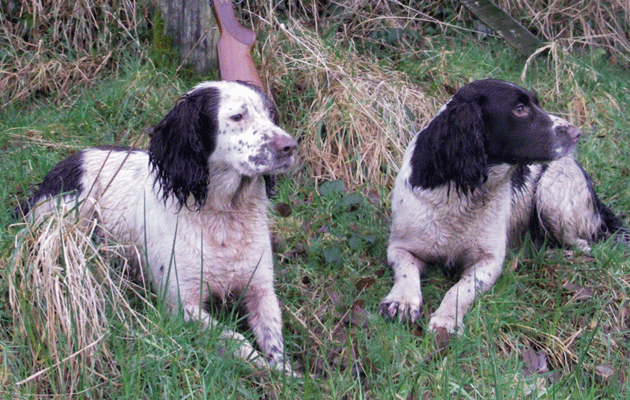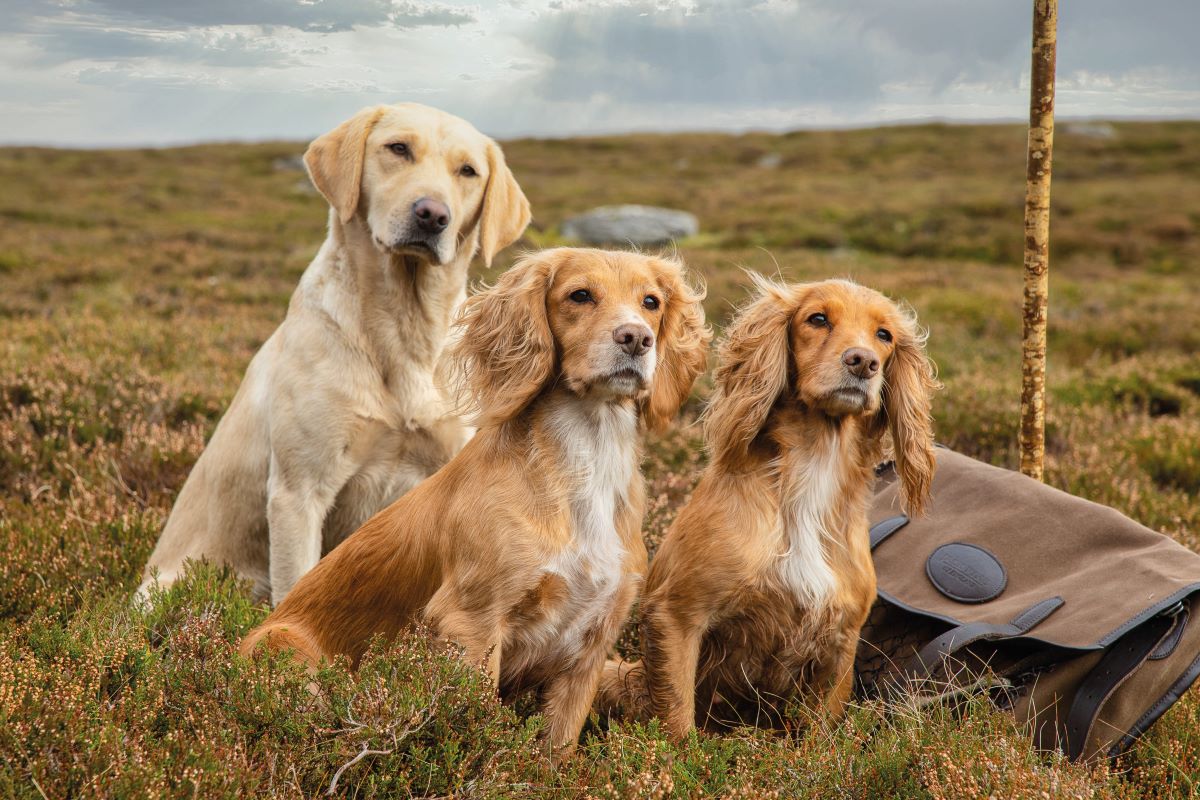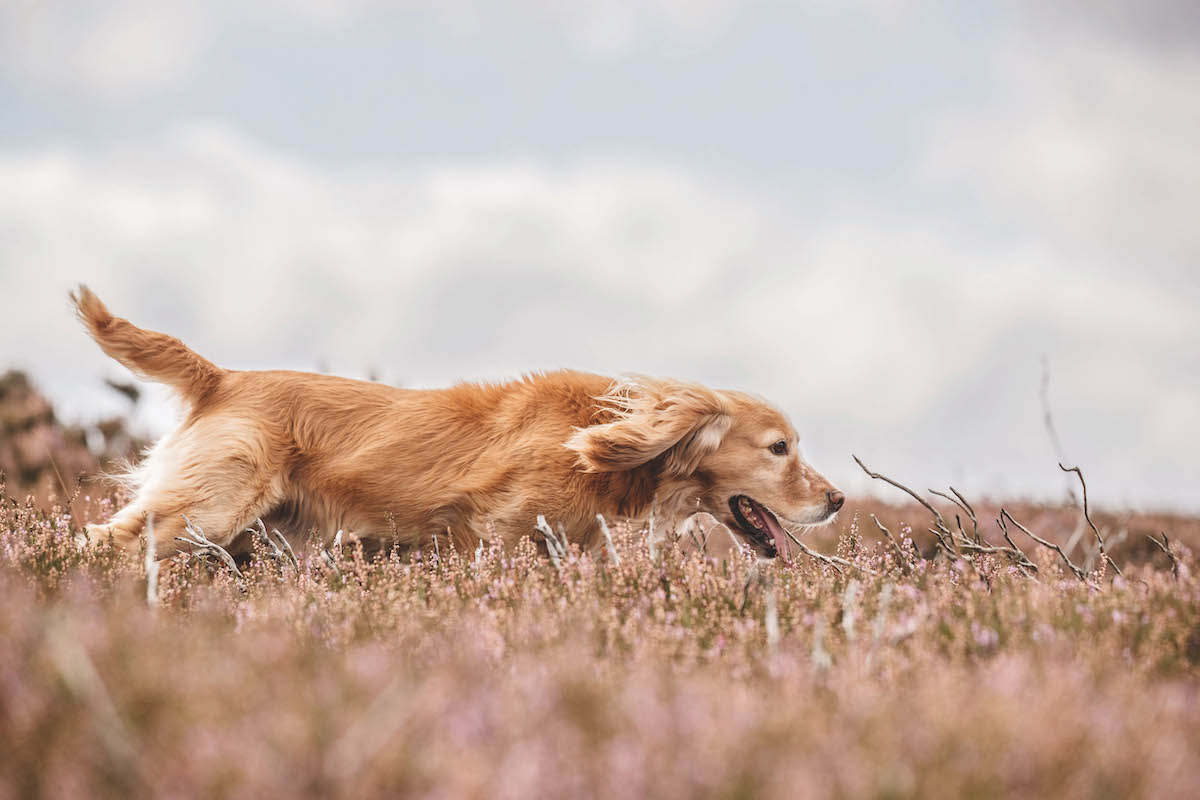The Givendale line of English springer spaniels
Dissatisfied with modern working springer spaniels, Peter and Bernadette successfully re-introduced a more traditional strain of this gundog breed with their Givendale line

What, I wonder, would our grandfathers have made of the modern working English springer spaniel? Would they admire its speed and agility, plus its trainability, or would they miss the substance and stamina, not to mention colour, of the pre-war springer? Whether you like it or not, the 21st century springer is a very different dog from its predecessors. It is smaller and lighter in build, considerably faster and much less heavily marked than was once the case. You only need look at photographs of the field trial champions of the 1930s — handled by such legendary names as Joe Greatorex, Tom Gaunt and John Kent — to see this.
There are still those who hanker after the traditional springer, as the story of Peter May and the Givendale spaniels reminds us. Peter was brought up in East Yorkshire, where his father managed a herd of pedigree Holstein Friesian cattle. Here, Peter developed his passion for working spaniels and shooting, and he went on to work as a gamekeeper. A change of career eventually took him and his wife Bernadette to County Leitrim, in Ireland’s midlands, where they have lived for all but two of the past 18 years.
Those two “gap” years were spent in France, but when they returned to Ireland Peter decided to take up shooting again. He wanted a working springer, so he contacted the Irish Kennel Club, which put him in touch with some of the country’s leading breeders. “I spent the next three or four months travelling the length and breadth of Ireland,” he told me, “but after looking at litters of puppies and their parents I decided that I was wasting my time. I didn’t like the look and conformation of these modern field-trial dogs.”
Instead, Peter searched for genuine working springers with no trialling blood. “It turned out to be incredibly difficult, as the old-style medium-sized spaniels that I had bred and worked in my
former gamekeeping days were few and far between,” he said. “I had always loved woodcock shooting and so enquired about any litters of puppies whose parents were top-class woodcock dogs.”
This proved to be a more productive line of enquiry, and Peter ended up buying three young springers — two bitches and a dog. “I didn’t look at any breeding history and didn’t concern myself with paperwork, apart from making sure they had no modern field- trial breeding for at least five generations and no line-breeding, again within a minimum of five generations,” he said.
As the dogs matured, he realised he had something special. “Using only the stockmanship taught to me by my father, I had put together a remarkable trio of spaniels. As a young man, I had shot rabbits over spaniels in Givendale in Yorkshire, so Givendale became our affix. The terrain in Givendale was testing for a spaniel, but nothing like as hard as it is here in Ireland. Woodcock are our principal quarry, and I found that our spaniels were able to hunt this type of cover at a fast, exciting pace for up to four hours without slowing. They would enter and flush woodcock from the thickest of cover but always worked in range.”
Finding a niche market
Peter and Bernadette decided to breed from both bitches, using their dog, Jack, as the sire. “All three spaniels had stunning dark-liver coats,” said Peter. “We had eight beautiful puppies from the first litter. My advertisement read: ‘Medium-sized, fast-action, stylish, powerful springers with immense stamina and immeasurable hunting drive and natural ability, with no modern field trial breeding at all’.”
There was no response for the first three days, then the phone didn’t stop ringing: “It was evident that many people didn’t want modern trial spaniels but were looking for the sort of puppies I had bred. I had hit a niche market, as people came from all over Ireland — within three days all the puppies were sold.”
Peter said every litter since then has “sold like hot cakes” and he now has a waiting list. Givendale spaniels have gone to the US and the UK. “What is most satisfying is that all have been consistently outstanding working spaniels,” he said. “I trained one from the first litter for a friend, who has a passion for woodcock shooting. Midge flushed more than 600 woodcock in his first season, retrieving more than 300 and never losing a bird.”
Peter thought he was fighting a minority battle to keep the traditional springer going, but when he researched Jack’s ancestry he was surprised to find “he had several generations of Newflame spaniels behind him” even though he was bought from Country Galway “on a freezing cold and snowy night”.
Peter discovered that Newflame is the affix of Glyn and Diane Burrows in Derbyshire, who are as passionate about breeding proper working spaniels as anyone in the UK. I can vouch for this, as I reported on Newflame six years ago.
The Givendale kennel is in good shape, having just acquired a new stud dog for the home-bred bitches that have been kept back, plus two Newflame bitch puppies from Glyn Burrows. They will eventually be put to Jack. Ironically, the very first Newflame spaniel, Jenny, was bought, like Jack, on a cold and snowy night 30 years ago. The story has come full circle.








